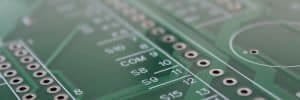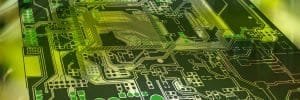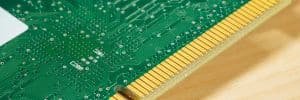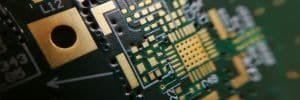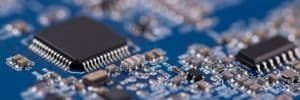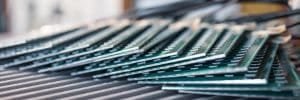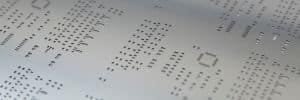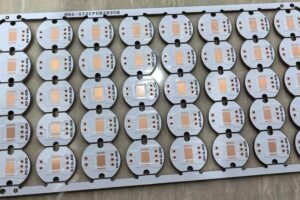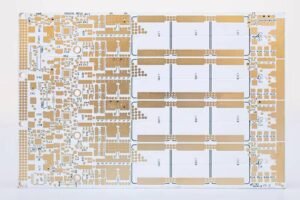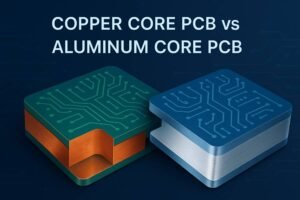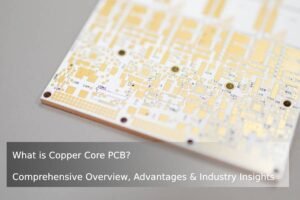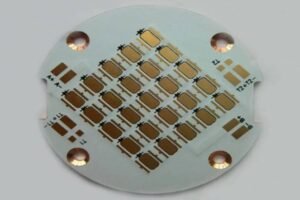Table of Contents
Introduction
In the fast-evolving world of electronics manufacturing, Surface Mount Technology (SMT) and Surface Mount Devices (SMD) play pivotal roles in creating compact, efficient, and reliable PCBs. Whether you’re designing a smartphone, medical device, or automotive system, understanding the difference between SMT and SMD is essential for optimizing PCB assembly processes. SMT refers to the advanced technique of mounting electronic components directly onto the surface of a PCB, while SMDs are the specialized components designed for this process. This article explores the distinctions, benefits, and applications of SMT and SMD, helping engineers, designers, and manufacturers make informed decisions for their projects. Read on to discover how these technologies drive innovation in modern electronics.

What is SMT?
SMT is a cornerstone of modern electronics manufacturing, enabling the efficient assembly of PCBs. Unlike traditional through-hole technology, SMT involves mounting electronic components directly onto the surface of a PCB, eliminating the need for drilled holes. This method revolutionized the industry in the 1980s by enabling smaller, lighter, and more complex circuit designs.
Key Features of SMT
- Leadless or Short-Lead Components: SMT components have no leads or short leads, reducing space requirements.
- Surface-Mounted Design: Components and solder joints are placed on the same side of the PCB, streamlining assembly.
- High Automation: SMT supports automated pick-and-place machines, enhancing production speed and precision.
Historical Context
Introduced in the 1980s, SMT transformed electronics by enabling mass production of compact devices like smartphones and laptops. Its adoption reduced manufacturing costs while improving performance, making it the standard for industries such as aerospace, automotive, and consumer electronics.
Why SMT Matters
SMT’s ability to support high-density PCB designs makes it ideal for modern applications requiring miniaturization and reliability. By minimizing parasitic capacitance and inductance, SMT enhances circuit performance, paving the way for cutting-edge innovations.
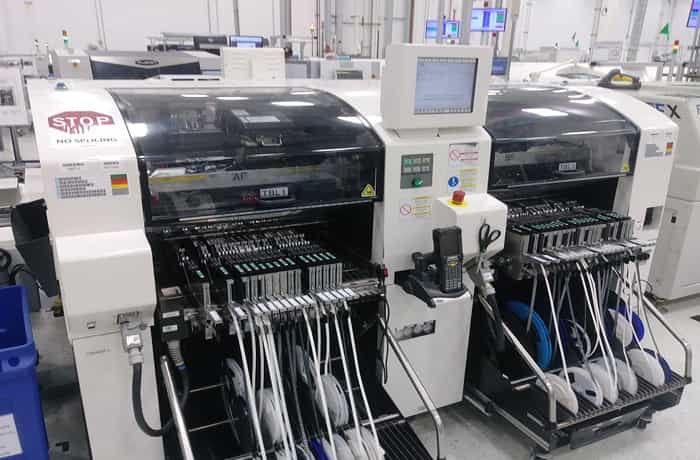
What is SMD?
SMDs are the specialized electronic components designed specifically for Surface Mount Technology. Unlike traditional through-hole components, SMDs are compact, leadless, or have short leads, and are mounted directly onto the surface of a printed circuit board. These devices are integral to creating high-density, lightweight, and efficient electronic assemblies used in everything from smartphones to medical equipment.
Key Features of SMD
- Miniaturization: SMDs are significantly smaller than through-hole components, enabling compact PCB designs.
- Leadless or Short-Lead Design: Flat contacts or short pins reduce space and improve electrical performance.
Surface Assembly Compatibility: SMDs are optimized for automated SMT processes, ensuring precision and scalability.
Types of SMDs
SMDs encompass a wide range of components, including:
- Passive Components: Resistors, capacitors, and inductors for basic circuit functions.
- Integrated Circuits (ICs): Microchips and processors for advanced functionality.
- Electromechanical Devices: Switches, connectors, and micro-motors for physical interactions.
SMD’s Role in SMT
While SMT is the assembly process, SMDs are the physical components that make it possible. Their small size and compatibility with automated pick-and-place machines have driven the evolution of modern electronics, enabling sleeker devices with enhanced performance.
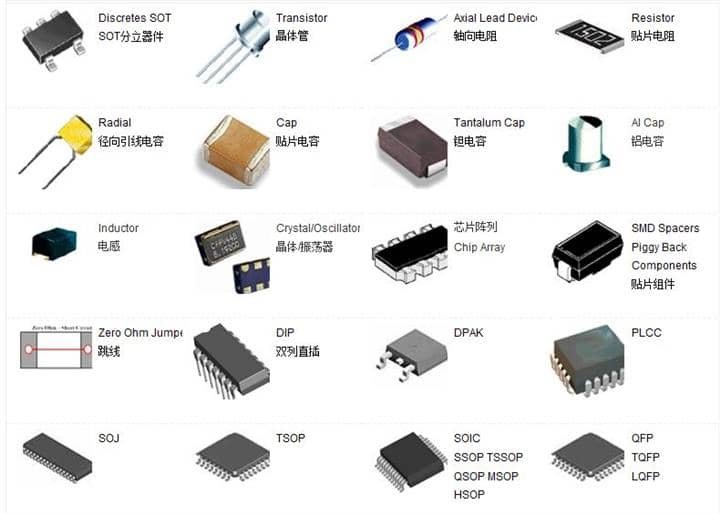
Key Differences Between SMT and SMD
Understanding the distinction between Surface Mount Technology (SMT) and Surface Mount Devices (SMD) is crucial for anyone involved in PCB design and manufacturing. While SMT and SMD are closely related, they serve different roles in the electronics assembly process. Below is a clear comparison to highlight their differences.
SMT vs SMD: A Side-by-Side Comparison
| Aspect | SMT (Surface Mount Technology) | SMD (Surface Mount Device) |
|---|---|---|
| Definition | A manufacturing process for mounting components directly onto a PCB’s surface. | Electronic components designed for surface mounting in SMT processes. |
| Role | The technology and method used for PCB assembly. | The physical components used in the SMT process. |
| Application | Involves processes like solder paste application, component placement, and reflow soldering. | Includes resistors, capacitors, ICs, and other devices placed on PCBs. |
| Key Features | Automation-friendly, no through-holes required, supports high-density designs. | Miniaturized, leadless or short-lead, optimized for surface assembly. |
How They Work Together
SMT is the assembly technique that enables the placement and soldering of SMDs onto PCBs. Without SMDs, SMT would lack the components needed to function, and without SMT, SMDs could not be efficiently integrated into modern electronics. This synergy has revolutionized PCB manufacturing, enabling smaller, faster, and more reliable devices.
Why It Matters
For engineers and manufacturers, knowing the difference ensures better decision-making in selecting components and optimizing assembly processes for efficiency and performance.
The SMT Process Explained
Surface Mount Technology is a highly efficient and automated process for assembling PCBs. By mounting Surface Mount Devices directly onto the PCB surface, SMT enables the production of compact and reliable electronics. Below is a detailed overview of the SMT process, outlining each critical step.
Step-by-Step SMT Process
Solder Paste Application
A PCB stencil is aligned over the board, and a squeegee applies a precise layer of solder paste to the designated pads. This paste acts as both an adhesive and a conductive medium for soldering.
Key Note: Uniform application ensures strong, reliable solder joints.Component Placement
Automated pick-and-place machines or manual placement position SMDs onto the PCB, aligning them with the solder paste-covered pads. The paste temporarily holds components in place, but careful handling is essential to avoid misalignment.
Key Note: Modern pick-and-place masses handle thousands of components per hour with high precision.Reflow Soldering
The PCB passes through a reflow oven, where controlled infrared or convection heat melts the solder paste, forming permanent solder joints. The board is then cooled to solidify the connections.
Key Note: Temperature profiles are critical to prevent component damage or weak joints.Automated Optical Inspection (AOI)
The assembled PCB undergoes inspection via an AOI machine, which uses cameras to check for issues like misaligned components, solder bridges, or incomplete joints. Additional testing, such as X-ray inspection, may follow for complex assemblies.
Key Note: AOI ensures high-quality output by catching defects early.
Importance of the SMT Process
The SMT process is highly automated, reducing labor costs and human error while enabling high-volume production. Its precision supports the creation of compact, high-performance electronics used in industries like consumer electronics, automotive, and medical devices.
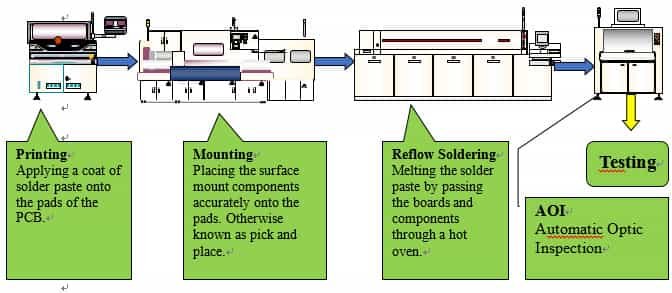
Advantages and Disadvantages of SMT
SMT has transformed electronics manufacturing by enabling compact, high-performance PCBs. However, like any technology, it comes with both benefits and limitations. Below, we explore the key advantages and disadvantages of SMT to help you evaluate its suitability for your PCB assembly projects.
Advantages of SMT
- Reduced PCB Size and Weight: SMT eliminates the need for through-holes, allowing for smaller, denser PCB designs that are ideal for compact devices like smartphones and wearables.
- Enhanced Automation: SMT is highly compatible with automated pick-and-place machines and reflow soldering, streamlining production and reducing labor costs.
- Improved Electrical Performance: The absence of long leads reduces parasitic capacitance and inductance, resulting in faster signal transmission and better circuit reliability.
- Cost Efficiency in Mass Production: Automated processes and smaller components lower manufacturing costs for high-volume runs.
- Higher Reliability: Precise solder joints and robust assembly techniques enhance the durability of SMT-assembled PCBs, even in demanding applications like aerospace and automotive.
Disadvantages of SMT
High Initial Investment: SMT requires expensive equipment, such as pick-and-place machines and reflow ovens, which can be a barrier for small-scale manufacturers.
- Repair Challenges: The small size of SMDs and their dense placement make manual repairs difficult, often requiring specialized tools and expertise.
- Thermal Sensitivity: Some components may be sensitive to the high temperatures of reflow soldering, risking damage if not carefully managed.
- Design Complexity: SMT demands precise PCB design and layout to avoid issues like solder bridging or misalignment, increasing design time and cost.
Why It Matters
SMT’s advantages make it the preferred choice for modern electronics, particularly where size, performance, and scalability are priorities. However, understanding its limitations helps manufacturers plan for equipment costs, training, and repair strategies to ensure successful implementation.

Applications of SMT and SMD
SMT and SMDs are integral to modern electronics, enabling the production of compact, high-performance devices across a wide range of industries. Their ability to support miniaturized, reliable, and automated PCB assembly makes them indispensable in today’s technology-driven world. Below, we explore key applications of SMT and SMDs, highlighting their impact on various sectors.
Key Industries Using SMT and SMD
- Consumer Electronics: SMT and SMDs are the backbone of devices like smartphones, tablets, and laptops, where compact size and high performance are critical. For example, SMD capacitors and resistors enable dense PCB layouts in devices like the latest iPhones.
- Automotive: Modern vehicles rely on SMT-assembled PCBs for systems like engine control units, infotainment systems, and advanced driver-assistance systems (ADAS). SMDs ensure reliability under harsh conditions like vibration and temperature fluctuations.
- Medical Electronics: SMT enables the creation of compact medical devices, such as pacemakers, diagnostic equipment, and wearable health monitors, where precision and reliability are paramount.
- Aerospace and Defense: SMT’s lightweight and durable designs are ideal for avionics, satellite systems, and military hardware, where space and weight constraints are critical.
- Telecommunications: SMDs like integrated circuits and connectors support high-speed communication devices, such as routers, 5G base stations, and IoT modules, ensuring efficient signal processing.
- Household Appliances: From smart thermostats to washing machines, SMT and SMDs enable cost-effective, compact electronics for everyday use.
Real-World Examples
- Smartphones: The compact PCBs in smartphones use SMDs like microchips and capacitors, assembled via SMT for high-density, reliable performance.
- LED Lighting: SMD LEDs, mounted using SMT, are widely used in energy-efficient lighting solutions for homes and commercial spaces.
- Medical Wearables: Devices like fitness trackers rely on SMT to integrate tiny SMD sensors into small, user-friendly designs.
Why SMT and SMDs Are Essential
The combination of SMT’s automated precision and SMDs’ compact design enables industries to innovate rapidly, producing smaller, smarter, and more reliable products. These technologies continue to drive advancements in electronics, from cutting-edge medical devices to next-generation automotive systems.

SMT vs Through-Hole Technology (THT)
SMT and Through-Hole Technology (THT) are two fundamental approaches to PCB assembly, each with distinct advantages depending on the project requirements. While SMT has become the go-to method for modern electronics, THT retains relevance for specific applications. This section compares SMT and THT to help engineers and manufacturers choose the optimal technology for their PCB designs.
SMT vs THT: A Detailed Comparison
Aspect | SMT | THT |
|---|---|---|
Mounting Method | Components are placed directly on the PCB surface. | Components have leads inserted through drilled holes and soldered on the opposite side. |
Component Type | Uses compact Surface Mount Devices (SMDs) with no or short leads. | Uses larger components with long leads, such as DIP ICs or connectors. |
Automation Level | Highly automated with pick-and-place machines and reflow soldering. | Often involves manual or wave soldering, less automated. |
PCB Size | Enables smaller, denser PCBs for compact designs. | Requires larger PCBs due to hole spacing and lead requirements. |
Mechanical Strength | Strong solder joints but less suited for heavy components. | Superior mechanical bonding for components under stress. |
Applications | Ideal for consumer electronics, medical devices, and IoT. | Suited for power electronics, industrial equipment, and prototypes. |
When to Use SMT or THT
- Opt for SMT:
- When designing compact, high-density PCBs for devices like smartphones, wearables, or automotive systems.
- For high-volume production leveraging automation to reduce costs.
- When prioritizing high-speed performance with reduced parasitic capacitance and inductance.
Opt for THT:
- For applications requiring robust mechanical connections, such as heavy connectors or transformers in power supplies.
- In low-volume or prototype projects where manual assembly is practical.
- When easy component replacement or repair is a priority, as THT components are simpler to desolder.
Why the Choice Matters
SMT’s automation and compact design make it the preferred choice for most modern electronics, driving innovation in industries like telecommunications and consumer products. However, THT’s durability ensures its use in applications requiring mechanical strength or manual assembly. Selecting the right method optimizes production efficiency, cost, and product reliability.

FAQs About SMT and SMD
Surface Mount Technology (SMT) and Surface Mount Devices (SMD) are critical to modern PCB assembly, but they often raise questions among engineers, designers, and manufacturers. Below, we address the most common queries to clarify their roles, benefits, and applications, helping you make informed decisions for your electronics projects.
What is the difference between SMT and SMD?
SMT is the manufacturing process of mounting electronic components directly onto a PCB’s surface, while SMDs are the components, such as resistors, capacitors, or ICs, designed for this process. In short, SMT is the technique, and SMDs are the parts used within it.
Why is SMT more popular than Through-Hole Technology (THT)?
T offers several advantages over THT, including smaller PCB sizes, higher automation, and improved electrical performance due to reduced parasitic effects. These benefits make SMT ideal for compact, high-volume electronics like smartphones and medical devices, driving its widespread adoption.
What are the latest trends in SMD technology?
Recent SMD advancements include smaller component sizes (e.g., 0201 packages), enhanced thermal management for high-power applications, and integration of advanced ICs for IoT and AI devices. These trends support the demand for more compact and efficient electronics.
How can I optimize PCB design for SMT?
To optimize for SMT, ensure precise pad layouts, use design-for-manufacturing (DFM) guidelines, and select SMDs compatible with your assembly process. Additionally, incorporate thermal reliefs and test points to enhance reliability and ease of inspection during production.
Are there limitations to using SMT and SMDs?
While SMT enables compact designs, it requires significant initial investment in equipment and can be challenging for repairs due to small component sizes. SMDs may also be sensitive to high reflow soldering temperatures, necessitating careful process control.
Conclusion
Surface Mount Technology (SMT) and Surface Mount Devices (SMDs) are at the heart of modern electronics, enabling the creation of compact, high-performance, and reliable PCBs. SMT, as an automated assembly process, works seamlessly with SMDs, the specialized components designed for surface mounting, to drive innovation across industries like consumer electronics, automotive, and medical devices. By understanding the differences between SMT and SMD, as well as their advantages and applications, engineers and manufacturers can optimize their PCB designs for efficiency and scalability. Ready to elevate your PCB assembly projects? Contact JHYPCB for expert PCB manufacturing and assembly services to get started today.

